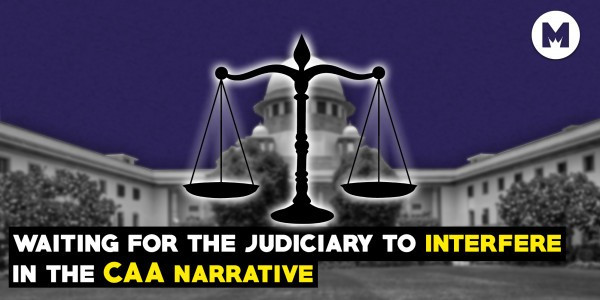
Article
The CAA Narrative is a Watershed Moment for the judiciary not to falter
25 Sep 2020

The recent enactment of the amendments to the Citizenship Act of 1955 has left many very disturbed.
The legislation itself is undoubtedly problematic and is when compounded by the linkages with the National Register of Citizens (NRC), creates a sense of fear in a particular community.
The CAA is touted as a “fast-track” means of granting citizenship by naturalization to what it identifies as persecuted minorities (Hindus, Sikhs, Buddhists, Jains, Parsis, and Christians) from three neighboring countries (Afghanistan, Bangladesh, and Pakistan). Those belonging to these communities from these countries will not, as per the law, be regarded as “illegal immigrants”.
It is arbitrary and violates the right to equality before law enshrined in Article 14 of the Indian Constitution. It deliberately marginalizes Muslims as a minority community and uses religious identity as the basis for granting citizenship
The protests that have followed the Citizenship (Amendment) Act (CAA), 2019, were not surprising, but how the protesters were treated certainly is. The nation is continuously witnessing hundreds of protests in many cities. Most of them are peaceful like in Shaheen Bagh, Jantar Mantar, Jama Masjid, Police Headquarters Delhi, and in many cities of India.
Also read: Can we have a corruption-free society?
These protests mainly started from the universities like Jamia Milia Islamia and Aligarh Muslim university but the way how the police tried to suppress the protests by brutally hurting the students in their campuses, by opening fire on them in university, sparked the anger among the whole student community across the nation. The students of various universities like JNU, DU, PU, BHU, IITs, IIMs, and many Indian students studying in different parts of the world also stood in solidarity with these students and protested in their capacity.
Many of them refused to receive their gold medals, their degree during the convocation ceremony in the presence of the dignitaries.
Police Actions Under Question
The reaction of the law and order machinery to what were essentially student-led peaceful protests has led to incidents of violence and loss of property across the country, which is unfortunate. The way in which UP police was seen misbehaving and abusing members of a specific community is condemnable and raised serious questions on the working of police.
Also read: Why is there an uproar over Citizenship Amendment Bill
Were they having the support of their political masters when they were targeting the peoples of Muslim community? The way in which the Firozabad administration sends notice to the person who died 6 years ago for causing violence during Anti-CAA protests, raises doubts. Does the police arrest the suspects by identifying them by their clothes?
Expectations From The Judiciary
The Judiciary should immediately step in and start hearing the petitions filed by many social activists to evaluate and infer upon the situation. In the wake of the CAA protests, the Chief Justice of India reportedly said that if people/protesters wanted to “take to the streets”, then they need not approach the courts.
Some could read this statement as a sort of warning that good behavior was a prerequisite for obtaining justice. In any event, in a democracy, protest and recourse to the judiciary are options that are legitimately available to the people. Dissent or protest is the lifeline of a democracy. But, what is the judiciary supposed to do when society as a whole is protesting? In such a scenario, there is no clear line that can be drawn between declaring protesters as good or bad.
This is a watershed moment for this generation of judges.










